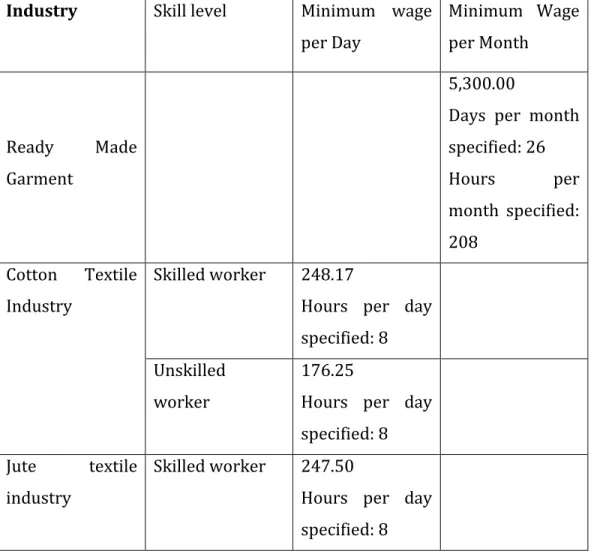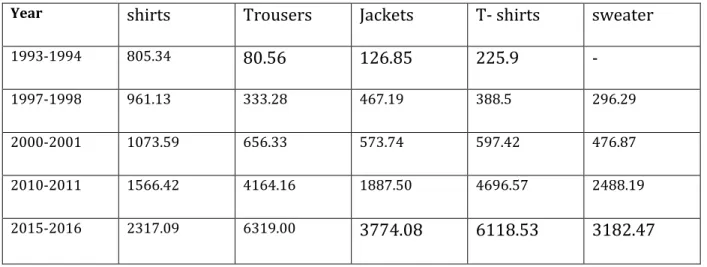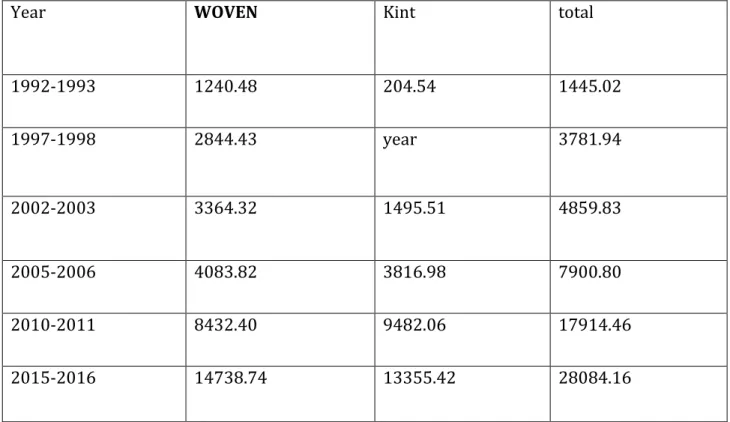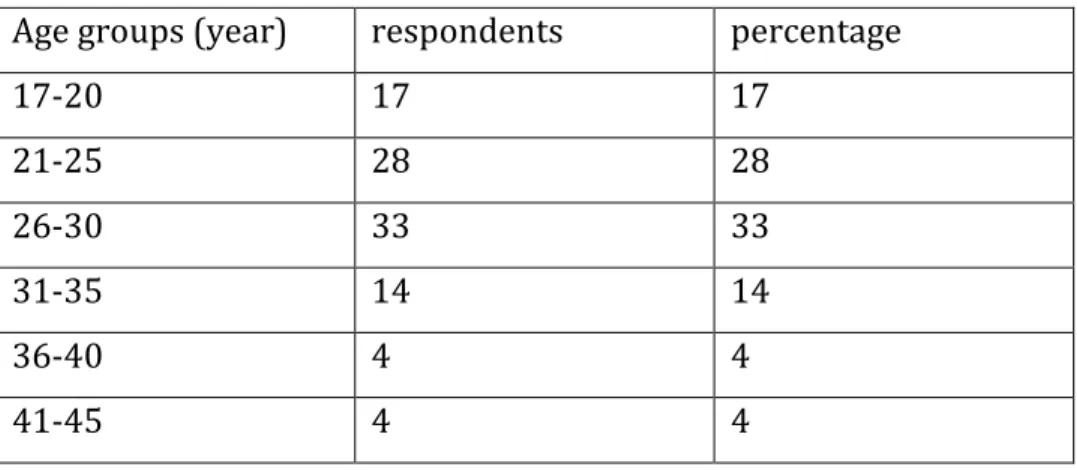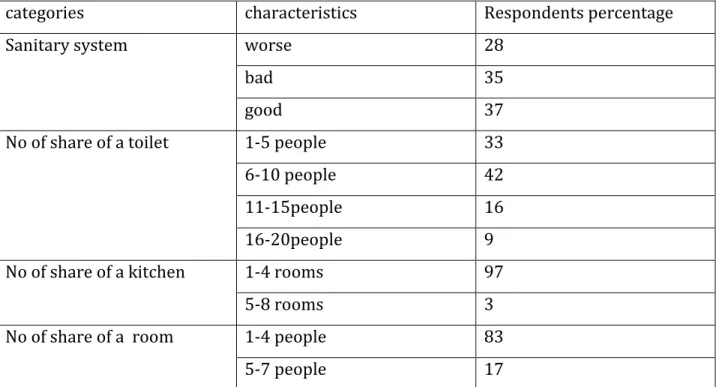This is to prove that this thesis contains the results of a research entitled “LABOR UTILIZATION OF THE READY-MADE GARMENT SECTOR IN BANGLADESH AND ITS SOCIAL IMPACT” was conducted by Fatema Akter Nova under my supervision. The purpose of this study is to describe some of the garment industry workers who have encountered labor exploitation in their workplace.
Background
As the work of readymade garment industries, most of them are illiterate, all these laws are unknown to the workers, hence the exploitation is also unsafe for the workers. The impact of invisible exploitation on the work of people of ready-made garment factories can be observed one of these is the avalanche of Rana Plaza and Tazreen in Bangladesh.
Motivation of This Studies
So, it is necessary to be clear about labor exploitation and its socio-economic impact of Bangladesh economy. This thesis focuses on the labor exploitation of the clothing sector and its impact on society.
Statement of the problem
For this reason, laborers do not know about the exploitation, on the other hand who have knowledge of the labor law, but worker does not take any action against the exploitation. But labor does not pay back as much as they contributed to the factory, then economic exploitation appears.
Limitation of this project
We can include many other terms related to the exploitation and ready-made clothing sector. As an insider as a Bangladeshi, the challenge I faced was a possible bias during interviewing, interpretation and data analysis of the ready-made labor sector of the Bangladeshi society.
LITERATURE REVIEW
Literature review
Umar, (2010) notes that low wages and a poor standard of living are major causes of labor unrest in the ready-made garment industry in Bangladesh. He further points out another cause of labor unrest in the ready-made garment industry in Bangladesh, which is workers' lack of ownership.
READY-MADE GARMENTS SECTOR
Ready - made garmentS (RMG)
- History of Ready-Made Garments Industry
- Contribution of RMG sector in Bangladesh Economy
- Labor Law of RMG Sector in Bangladesh
- Current minimum wage rate of ready-made garments sector in Bangladesh
- Present scenario of Ready-Made garments industry
- Major export Items and Recipient
- Export of Dynamics of Bangladesh garments sector
- Trade union movement of garment sector
- Problems of garment workers
Bangladesh is currently one of the 12 largest apparel exporters in the world and the sixth largest distributor in the US market and the fifth largest distributor of short-sleeved shirts in the EU market. The export-oriented RMG sector has made a decisive contribution to this above-mentioned transformation of the Bangladeshi economy. The overall impact of readymade garment exports is certainly one of the most important social and economic developments in contemporary Bangladesh.
He also passed additional laws in response to the changing circumstances and needs of the working class and the country. Currently there are more than two thousand one hundred garment factories in the country employing more than 12 short-term workers 85 percent of the workforce are women. With 5,000 factories employing about 3.6 million workers (out of a total workforce of 74 million), Bangladesh is clearly ahead of other Southeast Asian suppliers in terms of readymade garment industry capacity.
The share of knitted ready-made goods has been increasing since the beginning of the 1990s; such products currently account for more than 40 percent of the country's total RMG export revenue (BGMEA website). Bangladesh's market share of the $503 billion global apparel market is 5.1 percent, according to the World Bank's International Trade Statistics 2014. Bangladesh's exports have seen significant shifts since the 1990s toward exports focused on ready-made garments, which they represent the majority (about two thirds) of export revenues.
While in 1981-82 the American region accounted for only 9 percent of the total exports from Bangladesh. The main reason for the weakness of the trade union movement of the garment sector in Bangladesh is: 1.
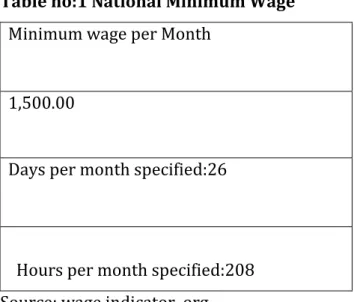
Methodology
- The empirical analysis
- The empirical models
- The estimating procedure
- Conceptual frame work
- According to karl Marx
- According to Adam Smith
- Data and Sampling Design
- Source of Data
- Selection of the study area
- Background of the Study area
- Field work organization and data collection
- field work organization
- Data collection and Selection of the Area
The sign of the coefficient of this particular variable is expected to be positive, because it directly affects the exploitation rate. The information, findings in the study and results of the estimates are analyzed and presented through tables, charts, graphs and figures. Marx thought, workers' labor under capitalism is not truly voluntary or entirely for the benefit of the workers themselves.
It is not truly voluntary because workers are forced by their lack of ownership of the means of production to sell their labor to capitalists or otherwise starve. During the first part, the worker works for himself and produces goods whose value is equal to the value of the wages he receives. Capitalist exploitation thus consists in the capitalists' forced appropriation of the surplus value produced by the workers.
Workers under capitalism are forced, because of their lack of ownership of the means of production, to sell their labor power to capitalists for less than the full value of the goods they produce. His rent provides the first deduction from the production of the labor employed on the land. The questionnaire was given to labor from ready-made clothing factories. The sample size of the study is 100 workers and 50 garment management information.
SOCIO ECONIMIC CHARECTERISTICS OF LABOR FORCE OF RMG
Socio economic characteristics of labor
- Age group wise workers
- Gender wise workers
- Schooling and family of workers
- Working hours of Workers
- Proper nutrition
- Proper health care
- Savings and loans
It is very hopeful that all children of garment workers now go to school with clothes, books and essentials. And in the end, 83% of the workers share a single room of 1 to 4 people, as we can see from Table 9. Lately, it has been argued that the crisis in the Ready Made Garment (RMG) sector is not only limited to wages and benefits of the employees, but also with working hours.
But it is urgent to reduce the cost of production to meet the foreign customer's demand and the competitive international price. Textile and clothing sector is a sector where workers do their work every day because it is directly related to physical production. It is also a boon for workers in Bangladesh that they have a large facility to migrate from one factory to another for the availability of factories as well as being a large market of workers.
It shows that up to 8000 tk from their monthly salary they use for their monthly food requirement almost 80% of the labor force. But in the case of working in the ready-made garment industry with the lower rate of pay than actually what they require, proper health care may not be possible. And the following table showing loan of labor that is in case of loan also about 51% of the respondents contain no loan and other 49% respondents require loan up to 2,00,000 tk.

RESULTS AND FINDINGS
- Determinants of labor exploitation
- Socio economic condition and life standard of RMG labor
In addition, according to the first row of the frequency table of the exploitation rate shows no exploitation in probably 20% ready-to-wear industries. Which indeed indicates that marginal labor productivity no longer exceeds labor share or that both are equal. This regression analysis of the exploitation rate shows that the age coefficient is -0.23, which means that if other variables remain unchanged, age has a positive effect on labor exploitation.
Here, the regression analysis of the utilization rate shows a negative coefficient of -0.03, which is negative; means that if other variables remain constant, the gender variable has a direct effect on labor exploitation, as women are more exploited than men. So he explains that as the level of education has changed, so has the level of exploitation. If the labor education level increases, the exploitation rate decreases to 0.19 levels.
Here the regression analysis on the exploitation rate shows negative coefficient is -0.11 which is negative; implies that if other variables remain unchanged, the variable experience has a direct impact on labor. If experience level of labor increases, the exploitation rate will be reduced at 0.11 rate This is statistically significant at 5% level. In this regression analysis on exploitation rate shows the coefficient is - 0.44 which implies that if other variables remain unchanged this variable has a positive impact.
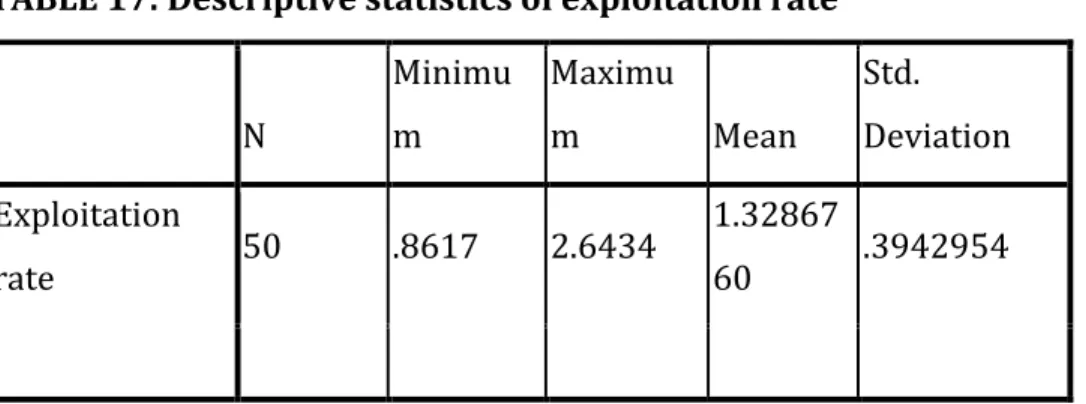
CONCLUSION AND POLICY IMPICATION
- Conclusion
- Discussion and Policy Implication
- Knowledge of the labor legislations
- Increase monitoring of Workplaces
- RMG worker’s information center
- Increase the effectiveness of labor law
- More activeness of trade union
- The increase of wage rate
- Less the hour work per day
Workers in Bangladesh are low-skilled, which limits the productivity and growth of the country's RMG exports. If the country could overcome these restrictions, it could do much better in the garment industry. But the country gets stuck at the same level of economic status and creates a large gap in income inequality in the country that no longer creates development in the indicated country.
I agree with the point of view of the interviewees that it is important for the worker in the RMG sector in Bangladesh to strive to know his rights contained in the labor law. Every city should have inspectors on the job, whose job is not only to check tax defaulters, but also to check the working conditions of RMG persons and safety in the workplace. I feel that every big city hosting a large number of RMG industries should have an information center where the workers intending to seek employment can go and receive them.
Every garment factory must have an active trade union for the workers. The wage rate must rise, otherwise economic exploitation will always prevail in society. But in Bangladesh, the working day is much higher than 8 hours, so it should be more than 8 hours.
Lists of references
Gender Issues and Bangladesh's Ready-Made Garment Industry: The Context of the Trade Union." In RSobhan and N Khundker (eds.). Wage Board Gazette, 2013: "Minimum Wage Garment Worker, Lowest Wage, Grade 7", published by Pupil's Republic of Bangladesh. Bhuiyan M I , Fair wages for workers to eliminate exploitation in Bangladesh's ready-made garment sector (RMG), Bangladesh Development Research Center (BDRC) 2508 Fowler Street Falls Church, VA U.S.A.
Habib A, WOMEN IN THE APPAREL INDUSTRY IN BANGLADESH; A PARADOX OF WOMEN EMPOWERMENT AND TRANSFORMATION OF STRUCTURAL VIOLENCE, master's thesis in peace and conflict transformation – SVF-3901, December, 2014.
